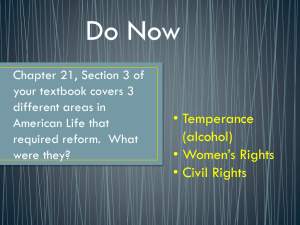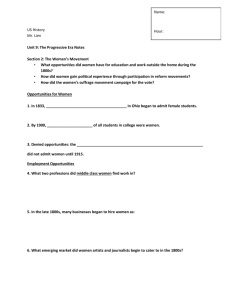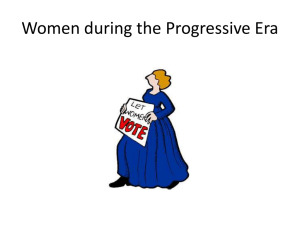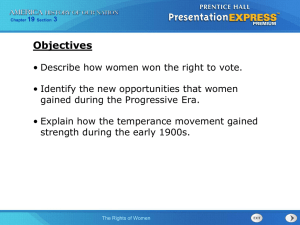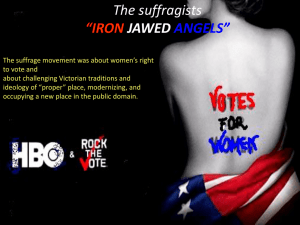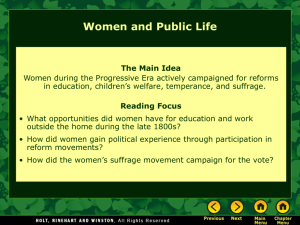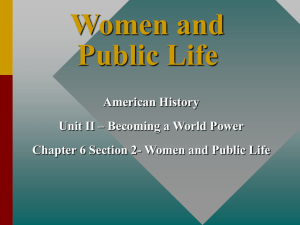Here
advertisement
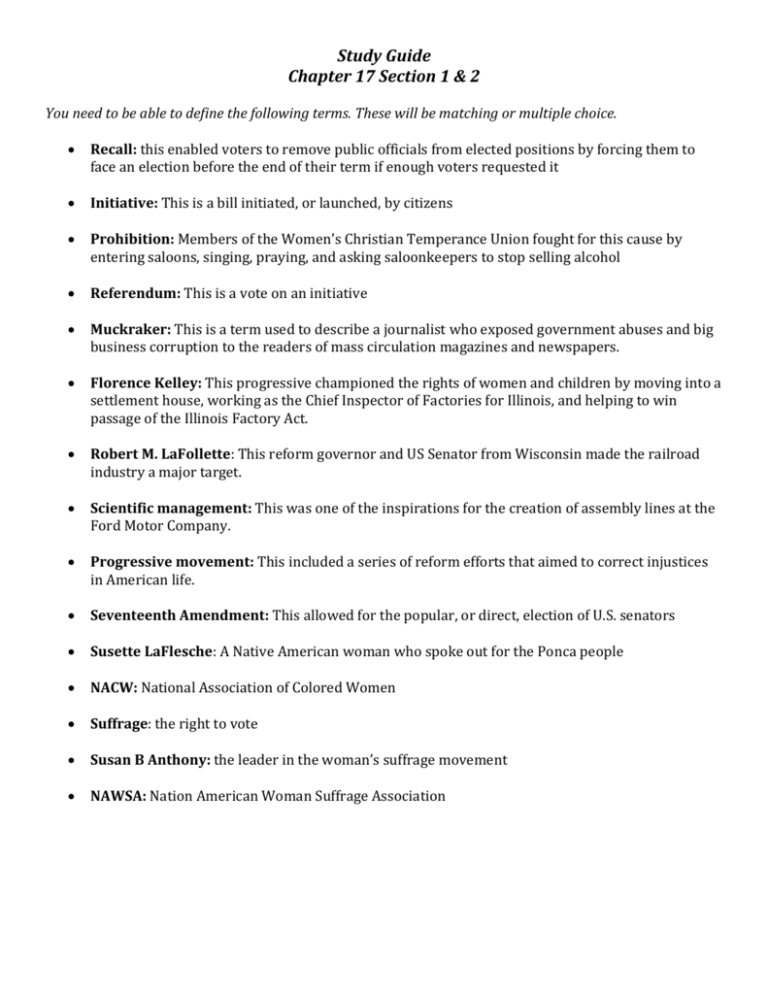
Study Guide Chapter 17 Section 1 & 2 You need to be able to define the following terms. These will be matching or multiple choice. Recall: this enabled voters to remove public officials from elected positions by forcing them to face an election before the end of their term if enough voters requested it Initiative: This is a bill initiated, or launched, by citizens Prohibition: Members of the Women’s Christian Temperance Union fought for this cause by entering saloons, singing, praying, and asking saloonkeepers to stop selling alcohol Referendum: This is a vote on an initiative Muckraker: This is a term used to describe a journalist who exposed government abuses and big business corruption to the readers of mass circulation magazines and newspapers. Florence Kelley: This progressive championed the rights of women and children by moving into a settlement house, working as the Chief Inspector of Factories for Illinois, and helping to win passage of the Illinois Factory Act. Robert M. LaFollette: This reform governor and US Senator from Wisconsin made the railroad industry a major target. Scientific management: This was one of the inspirations for the creation of assembly lines at the Ford Motor Company. Progressive movement: This included a series of reform efforts that aimed to correct injustices in American life. Seventeenth Amendment: This allowed for the popular, or direct, election of U.S. senators Susette LaFlesche: A Native American woman who spoke out for the Ponca people NACW: National Association of Colored Women Suffrage: the right to vote Susan B Anthony: the leader in the woman’s suffrage movement NAWSA: Nation American Woman Suffrage Association You should be able to discuss one of the reform movements: Reform Social Goal To improve the lives of the poor People/ groups YMCA, Salvation Army, Florence Kelley Moral To improve the lives of the poor Economic To reform capitalism or replace it with socialism. Make industry and business more efficient or profitable Woman’s Christian Temperance Union, AntiSaloon League The Socialist party, Eugene Debs, muckrakers Henry Ford, Ford Motor, Frederick Winslow Taylor Industrial efficiency Local government Root out corruption and to make government more responsive to the need of its citizens City mayors Hazen Pingree and Tom Johnson State government Robert M. La Follette Protect Workers Election Root out corruption and to make government more responsive to the needs of the citizens Obtaining better working conditions and benefits for adult workers and outlawing child labor Root out corruption and to make government more responsive to the needs of the citizens Successes Establishment of a variety of public institutions such as parks and settlement houses Adoption of prohibition by many town and state governments Public exposure of corruption Widespread adoption of the theory of scientific management, the Ford Assembly line and the “Five Dollar Day” Widespread adoption of the commission and council-manager forms of government and property tax reforms Wisconsin laws that managed to regulate the railroads. National Child Labor Committee, Florence Kelley Passage of the workers’ compensation laws William S. U’ren Widespread adoption of the secret ballot; adoption by some states of the initiative, referendum, recall, and direct primary; passage of the 17th Amendment Discuss the three strategies that leaders of the suffrage movement adopted to win suffrage? Strategies Results Women tried to convince state Utah, Colorado, Idaho, and Wyoming did give women the vote but legislatures to grant women the right efforts in other states failed to vote Women pursued court cases to test the A Supreme Court’s ruling that women were citizens but that 14th Amendment citizenship did not automatically include the right to vote Women pushed for a national For 18 years, whenever the amendment reached the Senate floor constitutional amendment granting for a vote, it was rejected women the vote
